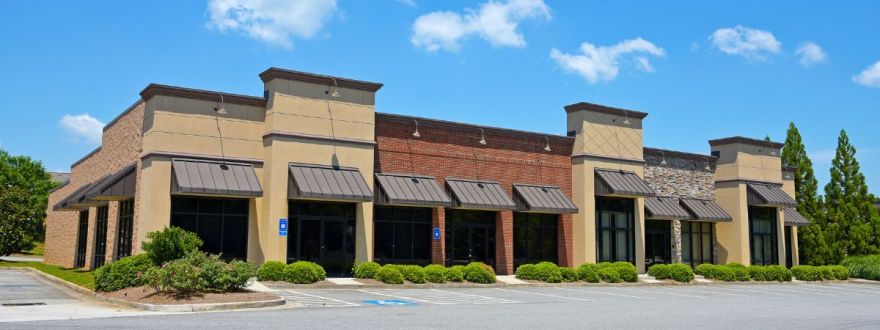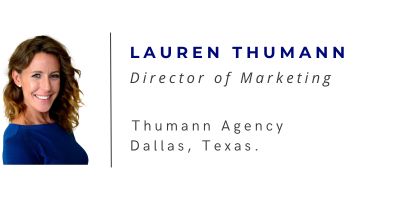
Owning a business in Texas means facing unique challenges, from severe weather to operational risks. A single event, like a hailstorm damaging your Dallas storefront or a fire disrupting your warehouse, can threaten your livelihood. How to Choose the Right Commercial Property Insurance is a critical decision for protecting physical assets, such as buildings, equipment, and inventory.
This guide provides a detailed roadmap to help Texas business owners select coverage that safeguards their operations, with a focus on the state’s specific risks, including tornadoes, hurricanes, and floods. By understanding key factors, you can make informed choices to secure your business’s future.
Understanding Commercial Property Insurance
Commercial property insurance protects a business’s physical assets against risks like fire, theft, vandalism, and natural disasters. In Texas, where severe weather events are frequent, this coverage is vital. According to the Insurance Information Institute, Texas led the nation in insured losses from natural disasters in 2023, with claims exceeding $5 billion. Understanding the scope of this insurance helps business owners prioritize their needs.
Coverage typically includes:
-
Replacement Cost (RC): Pays to repair or replace damaged property with similar materials, without accounting for depreciation. This is suitable for businesses needing to rebuild quickly, such as a Dallas retail store replacing inventory.
-
Actual Cash Value (ACV): Pays the current value of damaged items, factoring in depreciation. It offers lower premiums but may not cover full replacement costs.
-
Extended Replacement Cost: Covers expenses beyond policy limits if rebuilding costs rise, which is common in Texas after widespread disasters.
Beyond physical assets, policies may cover business interruption, compensating for lost income during closures. For example, a Houston restaurant hit by a hurricane could use this to cover payroll while rebuilding. Texas’s weather patterns, with 1,200 tornadoes reported from 2010 to 2020, underscore the need for tailored coverage. Business owners must assess their assets and risks to choose a policy that aligns with their operational goals. Learn more about Commercial Property Insurance Cost, read our guide on 10 Ways to Reduce Your Commercial Property Insurance Cost.
Assessing Your Business’s Insurance Needs
Every Texas business has distinct insurance requirements based on its size, industry, and location. A Dallas office differs from a San Antonio manufacturing plant. The National Association of Insurance Commissioners found that 43% of small businesses are underinsured, risking financial strain after a loss. A thorough assessment ensures you select business insurance Texas that fits your needs without excess costs.
Begin with a property valuation. Engage a professional appraiser to estimate the value of your buildings, equipment, inventory, and fixtures. For instance, a Dallas boutique might value its inventory at $150,000, while a warehouse’s machinery could be worth $1 million. Accurate valuation prevents claim shortfalls.
Consider these risk factors:
-
Location: Coastal businesses in Galveston face hurricane risks, while North Texas properties deal with tornadoes. Flood-prone areas require additional coverage.
-
Industry: Restaurants have higher fire risks due to cooking equipment, unlike consulting firms focused on office equipment.
-
Building Condition: Older structures, common in historic Austin districts, may need specialized policies due to outdated wiring or materials.
A risk assessment is essential. For example, a Dallas auto shop we assisted identified flood risks near a river, prompting flood coverage that saved $80,000 after heavy rains. By evaluating your business’s unique profile, you can prioritize coverage for choosing property insurance for businesses, ensuring protection against Texas’s diverse threats.
Key Factors Influencing Insurance Costs

The cost of commercial property insurance Dallas varies based on several factors, and understanding them helps Texas businesses manage premiums effectively. The Texas Department of Insurance reported a 17% increase in commercial property premiums from 2021 to 2024, driven by rising claim costs. Knowing these drivers allows you to balance affordability and protection.
Key factors include:
-
Location: Properties in high-risk areas, like Dallas’s tornado-prone regions, face higher premiums. A business in a flood zone might pay 25% more than one in a safer area.
-
Construction Materials: Buildings with fire-resistant materials, such as brick, have lower rates. Wooden structures, common in rural Texas, increase costs by 10-15%.
-
Occupancy Type: High-risk businesses, like chemical plants, face steeper premiums than low-risk offices due to potential hazards.
-
Safety Features: Sprinklers, alarms, and security cameras reduce claim risks, cutting premiums by up to 12%.
Business owners can take action to lower costs. For example, investing $3,000 in a security system might save $300 annually. Regular maintenance, like updating electrical systems, also helps. A Houston retailer reduced premiums by 10% after installing fire-resistant roofing. By addressing these factors, you can secure commercial property insurance comparison tips that protect your business affordably.
Evaluating Policy Options
Comparing commercial property insurance coverage options is a critical step to ensure your Texas business is adequately protected. A 2023 study by the Small Business Administration revealed that 35% of businesses overpay for insurance due to inadequate policy reviews. Thorough evaluation helps you find evaluating commercial property insurance policies that meet your needs without excess costs.
Focus on these elements:
-
Coverage Limits: Ensure limits cover the full replacement cost of your assets. A Dallas office building valued at $3 million needs matching limits to avoid financial gaps.
-
Deductibles: Higher deductibles reduce premiums but increase out-of-pocket costs during claims. A $5,000 deductible might save $500 yearly but requires careful budgeting.
-
Exclusions: Policies often exclude floods or earthquakes, common in Texas. Separate coverage is needed for full protection.
-
Add-Ons:
-
Business Interruption Insurance: Covers lost income during closures, like a San Antonio shop recovering from a fire.
-
Natural Disaster Coverage: Protects against hurricanes, which caused $130 billion in U.S. damages in 2023.
-
Endorsements: Adds coverage for specific needs, such as equipment breakdowns for factories.
-
Comparing policies involves reviewing insurer reliability. Check financial strength ratings from AM Best, aiming for A-rated carriers. Bundling with liability coverage can save 15-20%. A Dallas gym we assisted added flood coverage, saving $60,000 after a storm. By carefully assessing picking the right property insurance for businesses, you ensure comprehensive protection tailored to your Texas operations.
Navigating the Claims Process
Filing a claim after a loss can be complex, but a clear process minimizes stress and speeds recovery. In Texas, where weather-related claims are prevalent, efficiency is key. The Texas Department of Insurance handled 600,000 property claims in 2024, with 20% delayed due to incomplete documentation. Understanding the claims process ensures your business bounces back quickly.
Follow these steps:
-
Report Promptly: Notify your insurer within 24 hours, providing details like the loss date, cause, and scope. Delays can complicate approvals.
-
Document Thoroughly: Take photos, collect receipts, and record temporary repairs. A Dallas restaurant’s detailed photos expedited a $50,000 fire claim.
-
Submit Paperwork: Provide all required forms, including loss descriptions and proof of value. Organized records reduce processing time.
-
Monitor Progress: Check in weekly to avoid delays. Most claims resolve within 45 days with consistent follow-up.
Common challenges include underestimating damage or missing deadlines. For example, a Houston warehouse lost $20,000 by failing to document temporary repairs. Working with an experienced broker can streamline the process. Our team helped an Austin retailer secure a $100,000 payout after a tornado by coordinating documentation. Mastering the claims process is a vital part of business property insurance decision guide, ensuring your Texas business recovers swiftly. For a detailed breakdown of Commercial Property Insurance, read our full guide on Commercial Property Insurance: A Comprehensive Guide for Businesses in Dallas, Texas.
Commercial Property Insurance Done Right – Here’s Why We’re Your Best Choice
Since 1996, Thumann Agency has served Texas businesses from our Dallas office, bringing nearly three decades of expertise in customizing commercial property insurance coverage. Our licensed agents specialize in crafting policies that address Texas’s unique risks, from hailstorms to floods. With access to over 80 insurers, we offer unmatched flexibility, tailoring coverage to fit businesses of all sizes, from small Austin cafes to large Houston warehouses.
Our approach is rooted in local knowledge. Texas’s weather and regulatory landscape demand specialized solutions, and our team uses industry-standard risk assessment tools to identify vulnerabilities. A Dallas hardware store owner said, “Thumann Agency’s guidance saved us $12,000 on premiums while improving our coverage.” We’ve earned hundreds of positive reviews for our clear communication and cost-effective policies, reflecting our commitment to client satisfaction.
Unlike single-carrier agencies, our independence allows us to prioritize your needs, not a specific insurer’s. We streamline the process, from policy selection to claims, ensuring efficiency and value. For commercial property insurance selection guide that puts your business first, contact us. Get started with a free consultation by calling 972.991.9100.
FAQs About Commercial Property Insurance
Questions about factors to consider for property insurance are common among Texas businesses. Here are answers to clarify key points.
What is the best coverage form for a commercial property policy?
The best form varies by need. Replacement Cost (RC) suits businesses needing full rebuilding costs covered, ideal for high-value Dallas properties. Actual Cash Value (ACV) fits tighter budgets but may fall short for replacements.
How can I determine how much commercial property insurance I need?
Conduct a property valuation to assess assets—buildings, equipment, inventory. Include Texas risks like hurricanes. A thorough assessment ensures adequate how do I compare commercial property insurance policies.
What factors should I consider when choosing commercial property insurance?
Review location, construction, occupancy, and risks like floods. Compare limits, deductibles, and exclusions to find how to select the right commercial property insurance for my business.
What is the 80% co-insurance rule for commercial property insurance?
You must insure 80% of your property’s value to avoid claim penalties. Underinsuring reduces payouts, so accurate valuations are essential.
What are the types of commercial property insurance coverage forms?
Basic covers specific perils (e.g., fire), Broad adds risks (e.g., water damage), and Special covers all except exclusions. Each suits different Texas businesses.
What does Coverage B include in a commercial property policy?
Coverage B protects other structures, like fences or sheds, against covered perils, vital for properties with multiple assets.
Summary
Selecting commercial property insurance is a strategic process that protects Texas businesses from financial loss. By understanding coverage types, assessing risks, managing costs, comparing policies, and mastering claims, you build a robust safety net. Texas’s unique challenges, from tornadoes to floods, demand tailored solutions. Whether you run a small shop in Dallas or a large facility in Houston, the right policy ensures your business thrives despite setbacks. Each step, from valuation to claims, contributes to a resilient operation. For guidance on choosing commercial property insurance, trust a partner with local expertise. Call 972.991.9100 for a free consultation to secure your business’s future.
Last Updated: 13.07.2025
Author: Lauren Thumann Director of Marketing.

Disclaimer: This page is for educational purposes only. Coverage details vary by provider. Contact us for a personalized quote.
